Top 10 Interesting Facts about the Freemasons
Suggested by SMSWhether it’s their secrecy or their long list of credentialed members, the Freemasons hold a mystique that can fascinate and infuriate. Throughout history there have been those that wonder what goes on behind the Lodge doors and there have been numerous tales told about their practices and purposes.
This list is produced without bias or benefit. It is a collection of the ten most interesting facts about the Freemasons. With that in mind, the definition of fact is something that is indisputable, so conspiracy theories and fiction novelists’ musings can’t be included without real evidence.
10. Geometry and Masons
Given their origins in the fields of construction and engineering it should come as no surprise that geometry has always been held as a central symbol of Freemasonry. Compasses, set squares and pyramids are all recognizable images of the Freemasons and they represent the skills and mastery of the early Masons.
Although he lived thousands of years before the establishment of the first Freemason Lodge, Pythagoras has always held a place of honor among the Freemasons. His work is present in rituals and in symbols of Freemasons and Pythagoras Theorem has been referred to as the root of all geometry and geometry, the “foundation of all architecture and the root of mathematics”.
Similarly, Pythagoras work on the Golden Rectangle or Golden Ratio has also been acknowledged as a significant contribution to the world of architecture and design. This distinctive process of devising aesthetically pleasing and structurally sound proportions reflects in the work of great architects and engineers throughout history.
Other geometric forms and concepts, such as the pentagram, Fibonacci’s Sequence and Da Vinci’s Vitruvian Man, are all held in esteem by the nature of Freemasons. While these may be reflections of the movement’s origins, the recognition and promotion of geometry is also a statement of the Freemasons continuing search for beauty in architecture and form.
9. Masons can’t be Atheists
Despite the claims and accusations offered made of the Freemasons that they are in league with the devil, worship Satan or simply are striving for a Godless world in which they can control all economic structures, the reality is quite the opposite. A Freemason cannot be atheist; a man who is atheist cannot be recommended for candidature.
The reasons for this exclusion are moral and historic. Morally, if a man has no acceptance of judgment beyond this world, he is seen as lacking any permanent context for his moral code. While he may be a “good” man, he has no reason to heed his moral compass other than the prospect of punishment in this life. A man that fears the consequences in the afterlife of his immoral acts in this world is seen as more trustworthy.
Historically, the Freemasons have grown from a movement that held, at its roots, a belief in God. As far back as the early fifteenth century, there was record of the requirement of Freemasons to be Christian. As a result, the culture of Freemasonry as an organic process is strongly entwined with a belief in God.
Moreover, the place and work of Freemasons within the world is not measurable by external means. Given the secrecy and anonymity surrounding their good work, no Freemason can hold themselves up for judgment before the wider community. In fact, the only true measure of a Freemason’s progress is to view their efforts against the Will of God.
Finally, the acceptance of God and the belief in his glorious role as creator make it possible for the Freemasons to reverence to Him, as is due between a creature and Creator. Although this faith may appear a little blind and irrational, the more important characteristic is that of humility and the acceptance that man is not a deity himself, but merely a tool of a greater being.
8. Illuminati
Through a range of popular culture and literary vehicles the connection between the Illuminati and the Freemasons has been enhanced and exaggerated to the point that they are seen as synonymous. While there are some distant connections and some similarities in structure, there are few real links between the two.
The Illuminati, a group that conspiracy theorists insist are actually running the world, was a secret society established in 1776 in Bavaria in an attempt to perpetuate the Enlightenment as a movement to reform society and to encourage the growth of knowledge. Possibly in recognition of the effectiveness of the Freemasons’ structure, the Illuminati looked to use similar internal devices to give hierarchy and focus to the group.
However, the ruling class of Bavaria had some doubts about the helpfulness of a secret society that held as a goal the reformation of society. Perhaps hearing about what was happening in soon to be former British colony in America made them nervous about the idea of rebellion and decided that the Illuminati had better close down.
The will of Karl Theodor, the ruler of Bavaria, wasn’t immediately welcomed Adam Weishaupt, the founder of the Illuminati, and he tried to keep the society running. But with more military and political pressure, over the next few years efforts to sustain the Illuminati proved fruitless and it collapsed.
But, given the features that the Illuminati and the Freemasons had in common and the fact that quite a number of Freemasons found their way into both groups, there has been a longstanding belief that the relationship between the two societies was more than just friends. At one point in its short life, the Illuminati did infiltrate a large proportion of German Freemasonry, so there is good reason to think that they were of the same family.
Yet, to the disappointment of conspiracy theorists and writers of fiction, the Freemasons remain a prominent, if secret, part of society that contributes to the progress and health of the community. Whereas, the Illuminati, if they didn’t die out in the eighteenth century are so hidden that no-one has actually heard of them beyond the cover of fiction novels for centuries.
7. Freemason Handshake
The Freemasons are known by many names, some more polite than others. A common one is the “funny handshake mob”, which, although a little deprecating has basis in reality. After all, how could a secret society be secret without a secret handshake?
To be fair, one has to be impressed by the creativity of the Freemasons for they don’t simply have one secret handshake; they have a different one for each of a range of degrees and stages in their progression. The Boaz is the Grip of the Entered Apprentice, the first degree of Freemasonry. It is performed by pressing the thumb on the first knuckle of the fellow Mason, who reciprocates the gesture.
The Shibboleth is the greeting of the second degree mason, the Fellow Craft. To implement this grip, the Fellow Craft takes the hand as they would for a normal handshake, but then presses their thumb between the first and second knuckle of the fellow mason’s hand. This pressing is returned by the fellow mason.
The real grip of a Fellow Craft is known as Jachin. Taking the hand in the same way that one does for a normal handshake the mason then presses his thumb against the second knuckle of the other mason’s hand. This is repeated by the other mason.
At the point of meeting a Master Mason, the pass grip will consist of the Tubalcain. This handshake is performed by the Master Mason locating the space between the second and third knuckle of the fellow mason’s hand in the normal handshake position and pressing firmly.
The real grip of a Master Mason is the only one that shows distinct difference to the normal handshake. While the thumbs intertwine, as would be expected, the outside finger wraps around the other side of the hand and the top of each of the other fingers is pressed to the wrist of the fellow mason. The fingers should be somewhat apart. This grip is also known as the “Lion’s Paw” and goes by the title, Ma-Ha-Bone”.
While the use of such rituals only serves to reinforce the secret nature of the Freemasons and, in that, provide fodder for those who would raise concerns of secret conspiracies, there is another and more practical purpose behind their use. The recognition of a fellow mason is far more efficient and less complicated by such a greeting. It also reduces the incidents of making those who are not masons feeling excluded or slighted.
6. Initiation
The principle of initiation is not limited to the Freemason movement. Many religions, clubs and professional bodies have a form of initiation that serves the same fundamental purposes. Some have similar methods of initiation, although there can be significant differences in the spirit of the process.
Initiation carries with it the conscious decision of a subject to be included in a community. They have made a decision that they would like to share the attitudes, beliefs and practices of that community. Within the Freemason initiation process, this personal decision is crucial and many of the questions asked of the initiate make clear a commitment to the movement.
Initiation also bears a sense of rebirth or awakening to a new life. This is especially common to religious or cultural initiation and, while it is important to recognize that Freemasonry is not a religion, the sense of an initiate progressing to a new understanding and a new awareness of his place in the community is essential.
However, it must also be recognized that, as in most rituals, the use of symbolism and gesture can appear extreme or even silly to those who lack or reject the context of the rite. In the case of the Freemasons, some of these symbols include blindfolds, naked chests and bared feet. There are also acts of leading the initiate around by a rope tied around his neck and by directing him through a path that consists of rocks and other objects.
There is, of course, a collection of oaths and vows that must be sworn and these are perhaps the most difficult aspects for those beyond the walls of the secret society to accept. Whether by imagination or infiltration, suggestions of some of these oaths include the promise to commit perjury to protect a brother mason and the promise to maintain the secrecy of the Freemasons.
In essence, Initiation to the Freemasons has the capacity to arouse the suspicions of anyone who hates being left out of a secret. Yet, many of the practices, questions and oaths sworn are no more sinister than many of the religious or social initiations that society supports daily.
5. Those who were Freemasons
Amidst the claims and confusion that have led to the bitterness and bigotry toward the Freemasons, it is fascinating to acknowledge the figures in history who were member of the society. In mentioning only a few, the implications inherent in the association of such people with the Freemasons are also intriguing.
Within the world of politics the list of freemasons is impressive. Founding fathers of the United States, such as Benjamin Franklin and George Washington, are often included in such discussions, as are other American leaders, including Andrew Jackson, Gerald Ford and both Theodore and Franklin Roosevelt. In England Cecil Rhodes and both Lord Randolph and Sir Winston Churchill were among a number of prominent members, not to mention at least five British monarchs.
In Literary circles there are also numerous remarkable minds that have been a part of the Freemason movement. Satirists including Voltaire and Jonathan Swift were freemasons, as were Oscar Wilde and Sir Arthur Conan Doyle. Inspiring writers, such as Jules Verne and Samuel Clemens, better known as Mark Twain, were Freemasons, as were Lewis Carroll and Rudyard Kipling.
The scientific community is also exceptionally well represented with Robert Boyle, Christopher Wren and Charles Darwin all members of the Freemasons. In more recent times astronauts, including John Glenn and Buzz Aldrin, and computer innovators, like Steve Wozniak, have been acknowledged as members of the Society. While it remains in some dispute, there is also evidence that both Robert Hooke and Isaac Newton were also Freemasons.
The list of distinguished Freemasons could continue through an enormous range of fields. Mozart and Beethoven were Freemasons, as were Arnold Palmer and Ty Cobb. Oliver Hardy, Peter Sellers and at least two Marx Brothers were also members, as well as John Wayne and Clark Gable. In fact, just about any pursuit that can be named will find a representative in the Freemasons.
4. Racism and Homosexuality
If one was to follow the arguments put forward by the detractors of Freemasonry, it would seem logical that the membership of the secret society would be exceptionally limited to select sectors of the community. However, it is fascinating that the contrary is the case. Freemasonry is far more liberal in its acceptance of all men than many other bodies.
Before the United States of America had gained independence from Britain, Prince Hall and fifteen other free blacks were initiated into the Freemason by the Grand Lodge of Ireland. They formed African Lodge No.1 and, although they were limited in some of their practices, they paved the way for free and equal racial relationships between masons. Most strikingly this admittance to the Freemasons came eighty-six years before the American Civil War that would result in the abolition of Slavery.
As will always be the case in a single-sex community or organization, rumors and reports of homosexuality are easily produced and difficult to refute. The secret nature of the Freemasons only adds fuel to suggestions, although there is no evidence of any form sexual activity within the Freemasons. Furthermore, the inclusion of Freemasons suspected of being gay, such as Oscar Wilde, Cecil Rhodes and J. Edgar Hoover, would seem to add weight to the argument.
However, it is worth reconsidering this information and reframing it within the tenets of the Freemasons. The three prominent members mentioned were all great contributors in their respective fields. The sexual orientation of any Freemason has never been a matter of discussion or discrimination. In many ways, the acceptance of gay members within the Freemasons is a further indication of the genuine fraternity that exists within the movement.
As a fraternity, it is most interesting that Freemasonry is neither tolerant nor intolerant of the race, creed, sexual orientation or social class of its members. None of these are within its domain. Rudyard Kipling wrote that “men of many religions may sit down together in the same lodge” and this spirit appears to be available to any number of distinctions.
3. Women and The Freemasons
Although the Freemasons have been a single-sex institution since its inception, the exclusion of women has often been recognized as a wasteful and unwarranted restriction on the good work of the society. Despite this, the edict stands that women are forbidden … sort of.
Elizabeth St-Leger was a spirited young lady from Cork in Ireland. Having been caught spying on her father’s Lodge, she was initiated in 1712. She maintained to affiliation with the Freemason throughout her life and was buried with a full Masonic funeral.
In Kentucky, America, a curious woman by the name of Catherine Babington was intrigued by the activity at a neighboring two-story house that was used by the Freemasons. In order to satisfy her interest, Catherine hid in a hollowed out pulpit at every meeting for over a year. However, she was eventually discovered and then held in custody for a month. The decision was then made to “obligate” her, but she wasn’t admitted to the order.
More legitimately, in 1774, the noble women of France became frustrated with their exclusion from the Freemasons. They created adopted Lodges which, while still under the control of men, were a women’s alternative and recruited from the nobility.
It’s no surprise then that during the French Revolution, these lodges were extremely quiet and little more was heard of them until Empress Josephine reinstated them, becoming Grand Master of one of them.
There are now numerous Women’s Lodges throughout the world and, since early in the Twentieth Century, they are now presided over and run completely by women.
2. History
Despite the creative imaginations of fiction writers and conspiracy theorists, the history of the Freemasons is interesting in its growth from a group of philanthropic tradesmen rather than any illicit connection to ancient sects or outlawed religious orders. The speed of the Freemasons’ progression and the rapid increase in their membership is a reflection of the desire of men to share good works and support their community.
The Middle Ages were a time of growth and construction. Castles, cathedrals and all manner of impressive buildings were being constructed and the most common building material for these projects was stone. This bred a wealth of craftsmen and artisans skilled in the art of the stonemason.
By the Seventeenth Century the stonemasons were gathering in organizations that would promote their craft and contribute to their society. These were the first Freemason Lodges and as early as 1646 there is record of a Freemason being inducted to a Lodge in Warrington. The movement grew rapidly from there and began to accept non-operative members from other trades and occupations, but there was little coordination between the Lodges.
In 1717, four Lodges joined together and proclaimed themselves a Grand Lodge. Understandably, other Lodges felt aggrieved by what appeared an elitist undertaking. Although the structure of the Grand Lodge was repeated in other places, including Ireland and Scotland, there remained much dissent between the groups.
Almost a century after the initial Grand Lodge was formed; the schism that had developed between the factions of the Freemasons was closed as the United Grand Lodge of England was created to bring all Freemasons together.
While the Freemasons are fundamentally a positive contributor to the community, they were seen as a potential danger to Hitler’s Nazi Germany and many were interned as political prisoners. By the end of World War II, between 80,000 and 200,000 Freemasons had been killed in the concentration camps of the Nazis.
After the Second World War there was an enormous jump in the numbers of Freemasons as men returning from the fighting sought out the companionship of other men and a way of re-entering a society that had been changed by the ravages of war. Today an estimation of the number of Freemasons exceeds five million, led by the Grand Master, His Royal Highness the Duke of Kent.
1. Suspicion
Among the many fascinating facts about the Freemasons is the desperation with which the organization’s critics and detractors work to undermine it. Perhaps this is a response to that part of human nature that objects to not being let in on a secret or maybe it’s jealousy at the good work being done by the Freemasons and the subsequent kudos.
There are few movements so often regarded as proponents of political conspiracy and plotters against the forces of democracy and freedom. Freemasons are, according to some theorists, constantly in league with the devil of the day to install a New World Order. Sadly these campaigns always seem to be changing partnerships and one can’t help but question why the Jews, the Catholic Church, the Illuminati or whoever the previous villain was supposed to be doesn’t expose the new plot with their inside knowledge.
So paranoid are those that would strive for a New World Order that totalitarian states usually act quickly to outlaw the Freemasons. The fascist tried to ban them in 1925 Italy and Nazi Germany condemned Freemasons to concentration camps.
Within literature and the arts there are many references, both positive and negative to Masonic traditions and ideals. Rudyard Kipling and Mozart drew on Freemason ideals and symbolism in their work. Tolstoy led one of his major characters in “War and Peace” to become a Freemason and Dan Brown, in his celebrated books the “Da Vinci Code” and “Angels and Demons”, draws on Freemasonry with some challenging assertions.
Yet, so many authors and movie makers seem intent to blame the “secret society” of the Freemasons for the evils of the world. A list of films including “Paint Your Wagon” (1969) and “The Imaginarium of Doctor Parnassus” (2009) can be accused of Freemason links and the compilers of such evidence never tire of pointing out the “All Seeing Eye” on the United States of America’s dollar bill.
Regardless of the wealth of similar evidence, the fact that it is so frantically gathered underlines the obsessive nature of the suspicion toward the Freemasons.
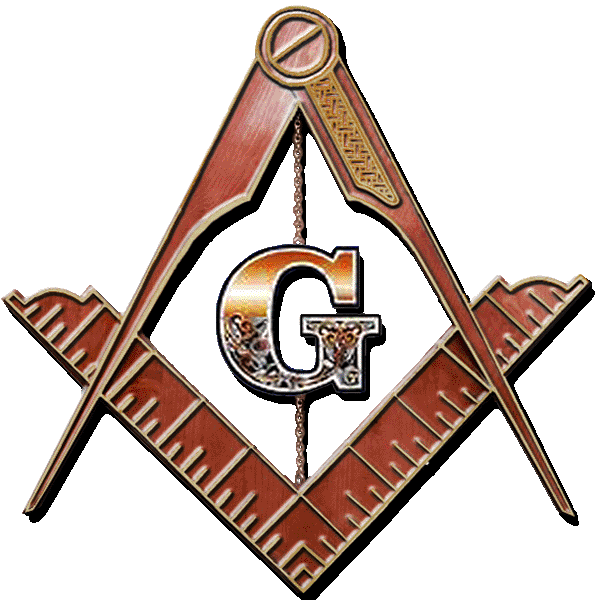
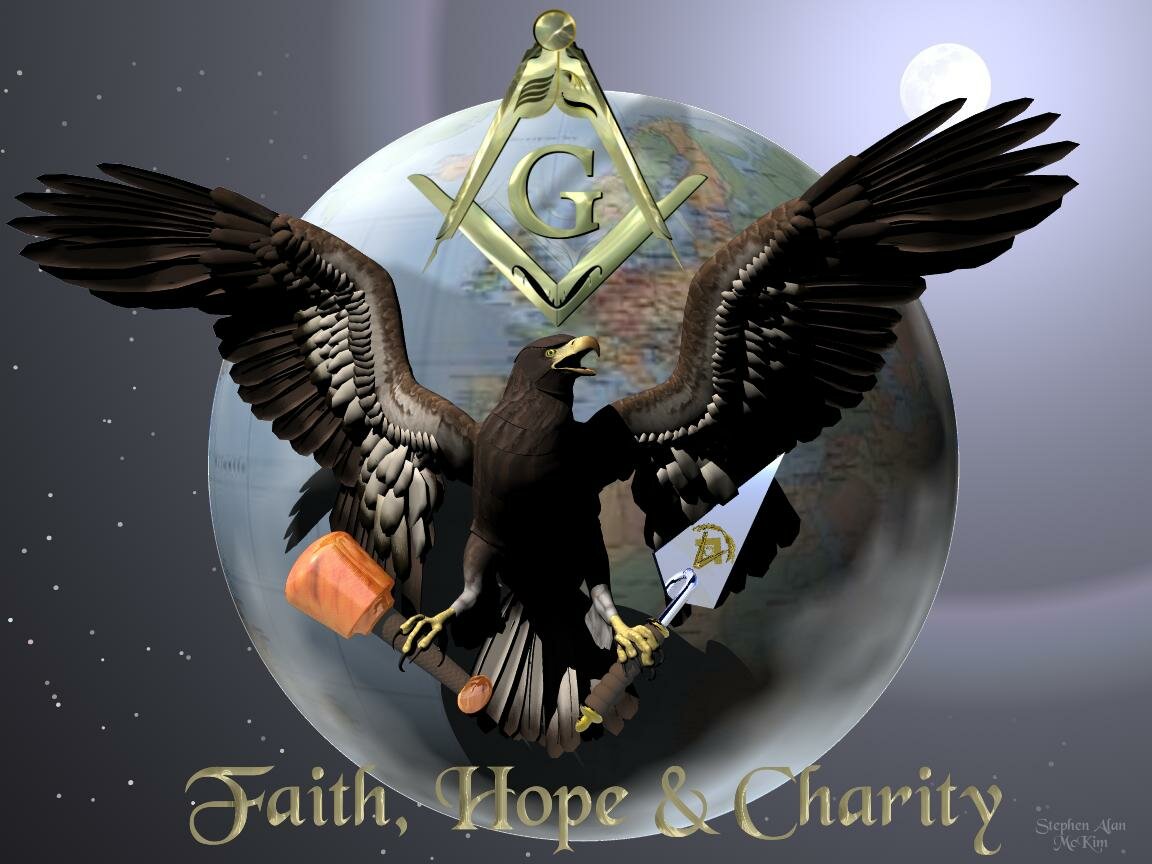

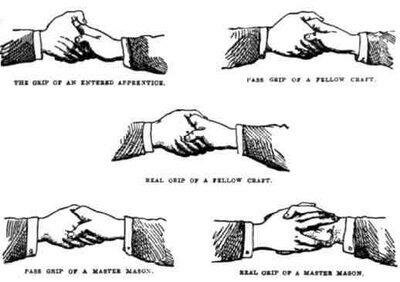


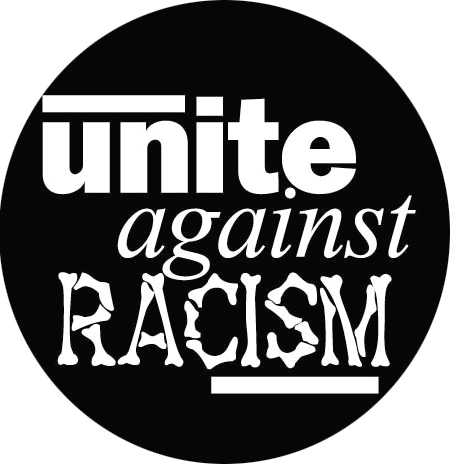
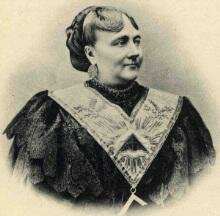
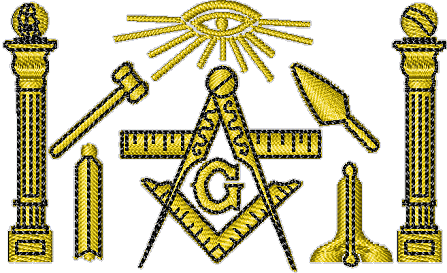







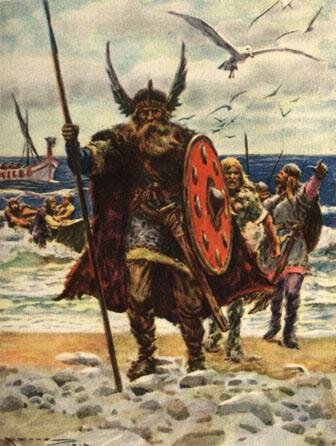



[...] Conspiracies link Freemasons to the Illuminati. However, this seems unlikely because the Illuminati are an entirely secret society, to the extent [...]
[...] Conspiracies link Freemasons to the Illuminati. However, this seems unlikely because the Illuminati are an entirely secret society, to the extent [...]
razersocial.com
Top 10 Interesting Facts about the Freemasons
allotment
Top 10 Interesting Facts about the Freemasons